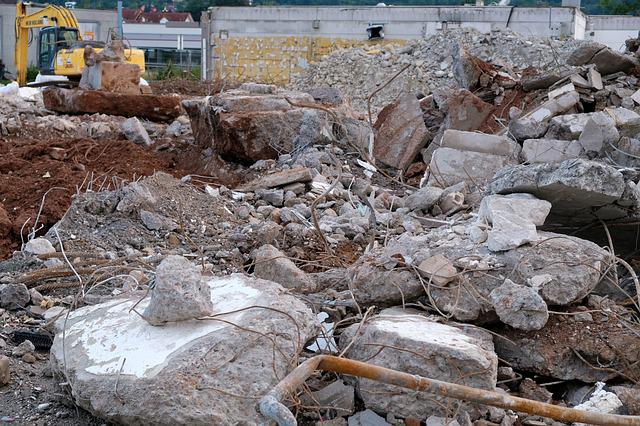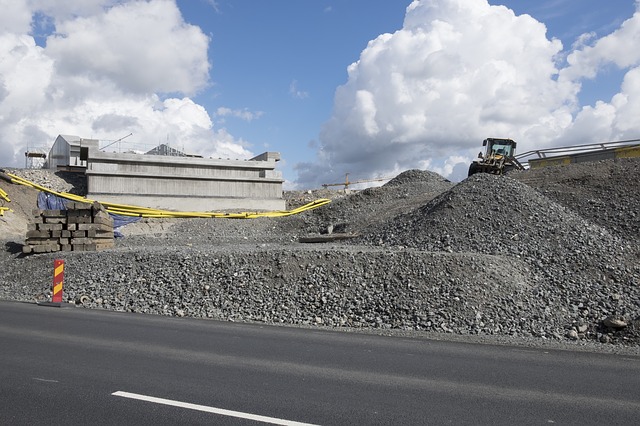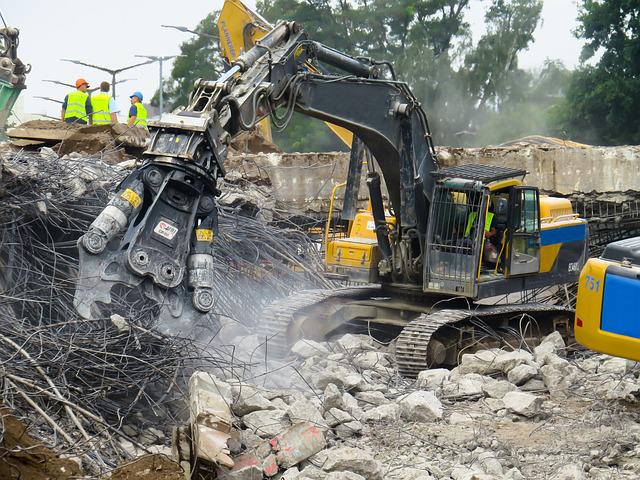Many project constructions require demolition at their initial development stage. This might involve demolishing concrete walls and concrete foundations. This process produces huge quantities of heavy construction materials which are usually thrown in the trash. Many materials — even concrete — may have been repurposed or replaced many times. Recycled concrete can be a simple way to reuse this concrete waste without the need of transporting concrete and adding to costs. which can easily skyrocket on construction projects.
What is recycled concrete aggregate?
Recyclable Concrete Aggregate (RCA) or Crushed Concrete’ is formed of asphalt waste from other construction works that is reused to make roads or pathways. When concrete structures are destroyed such as roads, sidewalks, etc. this discarded concrete is often thrown into landfills. Concrete has no biological degradation and cannot degrade unless discarded or sent to a concrete recycling plant. The recycling of concrete can be said to have started.
US History of Using Crushed Concrete for Roadway and Driveway Construction
In fact, since 1940 concrete pavements have been used for recycling as an alternative. The first instance occurred around the end of World War II. SR66 needed to be upgraded from two to four lanes in Illinois. During the reconstruction project, the old concrete has now been recycled into the new project. The 1970s was the biggest effort to reduce waste at landfills. Crushed concrete rubble was more commonly used for road building and driveway building. Crushed masonry remained popular in the 1980s, alongside recycling projects but the industrial crushing equipment needed for this often made it hard to perform this task, especially at the construction site, often limiting the use of recycled concrete aggregates.
Mix Design

The most common practice is to use natural sand when replacing natural coarse granular aggregates with coarse recycled aggregate without significantly affecting concrete’s mechanical properties. As replacement quantity increases dry shrinkage creep will increase and elastic modulus will decrease, compressive strength and freeze-thaw resistance are no longer important factors making more construction projects viable than ever. New portland cement concrete is one of the most common and is used for most concrete pavement in urban locations and continuously reinforced pavement areas as well as other concrete structures.
Recycled Aggregate Characteristics
Hardened Concrete is similar to natural rock in crushing and has no significant influence on the grade or quality. Recycled concrete aggregates produced from any original or worse quality concrete may meet the same standards as traditional aggregates when laying the bed foundation material. Concrete aggregates are made using recycled material that is also hydrated. The paste reduces specific gravity as well as increases its porosity compared to similarly pure aggregate. Higher porosity in RCA results in increased resorption.
Sustainability

Recycling concrete can improve sustainability on a variety of levels. Recycling concrete eliminates waste from landfill. Concrete is itself aggregate and embedded metal may also be taken down and recycled. As landfills get larger and more available, they help reduce the waste and economic impacts of the project as well. In addition, recycling concrete aggregates reduces virgin aggregate use. This reduces the environmental impact of mining.
A look at the Eco-Friendly, Cost-Effective Concrete Recycling Process
Quite surprised, the concrete was recycled. Instead of taking concrete out of the landfill and dumping the materials in the landfill, the companies will recycle the materials. Recycling concrete provides significant cost savings as well as reduces the environmental impact of concrete products and materials. Instead of mining and moving aggregates to manufacture a new concrete plant recycling concrete is used in place of the mining process.
Contaminant removal
Other devices and processes could also be involved to eliminate contamination and other material such as steel reinforcement fiber and other metals. This process includes hand picking, magnetic separation, air or water separating separators. When considering buying demolition equipment, consider a system that has the element separation system in place. A second point to think about is whether the equipment you need is: Concrete shredded is recycled for use as an aggregate to build concrete into a new concrete structure. It eliminates the necessity to mine other materials such as gravel and requires the transporting of materials.
Demolition
To recycle concrete must primarily break and be removed from existing pavement. Concrete recyclers transport concrete to a recycling site. Concrete recyclers can use mobile crushing equipment on a demolition site. This approach makes removing debris from a recycler much easier. The crusher will be centrally located on demolition land without obstruction but in good conditions.
What types of concrete can be recycled?
Thanks to innovations in concrete recycling machines, all types of concrete are possible for recycling. It removes metal for easier handwork. It also offers crushing and breaking equipment to handle concrete reinforcement. Typical concrete recycling initiatives include:
Landscaping
While gravel sands have been commonly used to create ground covering in the landscaping process, crushed concrete is equally effective in its construction. It may also be used to make pavements, water features, wall structures, rock walls, and underpass abutments.
Utility pipes. Bedding
Underground utility lines are generally covered by gravel for drainage, but crushed cement can be installed to provide an upright foundation and stable surface.
Crushing
Concrete recyclers may use machinery to crush concrete. This is then passed by a second impactor and is subsequently screened to remove dirt.
Permeable Pavement
Broken concrete forms a porous pavement surface where water filters and replenishes the water to prevent it from flooding into the waterways.
New concrete
Crushed concrete may be incorporated into poured concrete and replaced with some (typical) new (virgin) aggregates to produce aggregate.
Alternative uses for Old Concrete
Concrete can be repurposed in many ways as others, including gravel and pavements. Old concrete is useful for:
Base layers for new asphalt pavements
Old concrete can then be broken down to form the foundation layer of an asphalt pavement.
How can I recycle concrete?
The simplest way to recycle concrete from demolition is the pulverization of the old material. This complication also causes contamination in smaller byproducts. Industrial equipment must be used to recycle concrete efficiently. Concrete recyclers should consider every possible option on the market for the crushing process. Typically renting or purchasing portable crushers that are used for multiple jobs at one time. This can reduce disposal costs as well as the need for ready mix concrete or other raw material. Using both the large and small aggregates can save you money on new aggregates as well as the cost of transporting material to site.
Can concrete be recycled into RCA?
In RCA concrete is recycled from many types including pavements and foundations.
How is Concrete Recycled?

First steps are required when recycling old concrete to make it easier to recycle. The broken concrete then passes into a secondary impactor. The crushed cement was crushed at a much smaller diameter and then cleaned to remove dust and other debris. Then the concrete is broken into different sections according to the size. A second technique to recycle concrete is pulverizing. Pulverizing concrete is also not an efficient way of recycling the substance. This can cause contaminating to be separated very difficultly, resulting in reduced RCA.
Repurpose Recycled Concrete Aggregate

If the concrete has been recycled, the pieces may differ in size and thickness. Those sizes are ideal for diverse uses, and the materials are extremely versatile. Several large sections can be adapted into rapping. Rip-Rap, also called riprap, shot rock armor and rubble are smaller slabs of recycled concrete used along shorelines to control erosion or create breakwaters. Smaller gravel parts from RCA are often used to provide an affordable sub base for the road. Dry aggregate is even recyclable to form new concretes.
Retaining Walls/Rip-Rap
Bigger RCA pieces can be used for retaining walls or for riprap to control erosion and provide effective breakwater. Various sizes of crushed concrete can work together in reducing erosion. Using smaller crushed concrete layers to provide more stability to walls is important. A layer of recycled concrete mixed with dirt makes a unified and attractive barrier.
Raised Garden Beds/Landscaping
The creation of raised garden beds has many advantages. These include improved soil drainage and cooler watering, which will help your lawn grow quicker in spring. The foundation of the raised gardens will require the layering of crushed concrete. It is the ideal basis.
Walkways / Pathways
Crushed concrete is used in walkways and landscaping. Always use a uniform RCA piece on your walkway. It will help reduce the chances that rainwater can cause problems with drainage. Uniform items help enhance the finished walkway and can make it safer with jointed reinforced pavement that allows water to egress into the storm sewer systems.
Looking to make money from crafts?
Click here to learn how with our step-by-step guide showing you everything you need to know.


